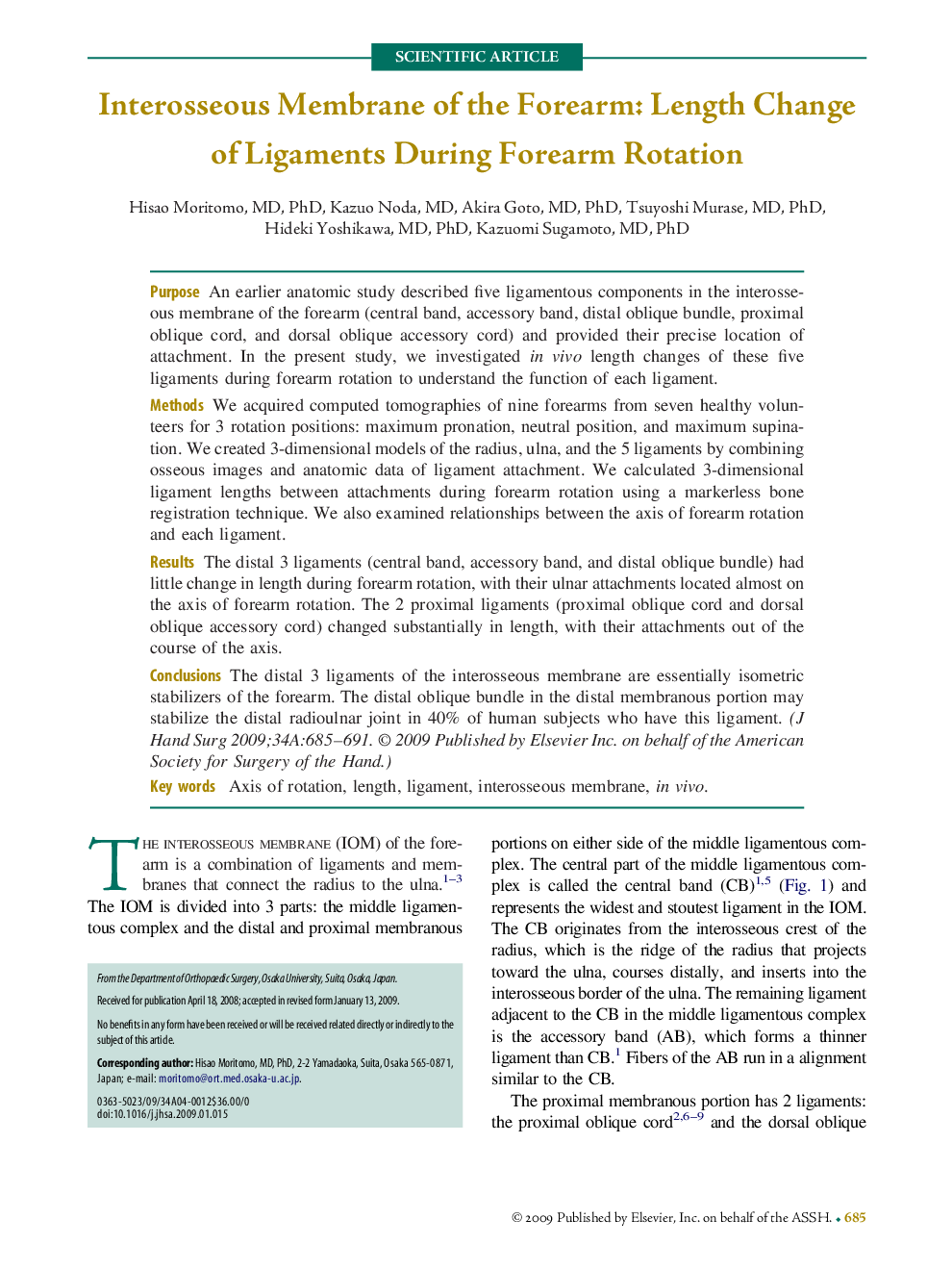| Article ID | Journal | Published Year | Pages | File Type |
|---|---|---|---|---|
| 4070681 | The Journal of Hand Surgery | 2009 | 7 Pages |
PurposeAn earlier anatomic study described five ligamentous components in the interosseous membrane of the forearm (central band, accessory band, distal oblique bundle, proximal oblique cord, and dorsal oblique accessory cord) and provided their precise location of attachment. In the present study, we investigated in vivo length changes of these five ligaments during forearm rotation to understand the function of each ligament.MethodsWe acquired computed tomographies of nine forearms from seven healthy volunteers for 3 rotation positions: maximum pronation, neutral position, and maximum supination. We created 3-dimensional models of the radius, ulna, and the 5 ligaments by combining osseous images and anatomic data of ligament attachment. We calculated 3-dimensional ligament lengths between attachments during forearm rotation using a markerless bone registration technique. We also examined relationships between the axis of forearm rotation and each ligament.ResultsThe distal 3 ligaments (central band, accessory band, and distal oblique bundle) had little change in length during forearm rotation, with their ulnar attachments located almost on the axis of forearm rotation. The 2 proximal ligaments (proximal oblique cord and dorsal oblique accessory cord) changed substantially in length, with their attachments out of the course of the axis.ConclusionsThe distal 3 ligaments of the interosseous membrane are essentially isometric stabilizers of the forearm. The distal oblique bundle in the distal membranous portion may stabilize the distal radioulnar joint in 40% of human subjects who have this ligament.
